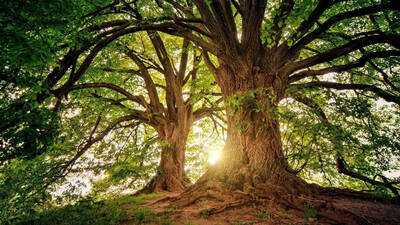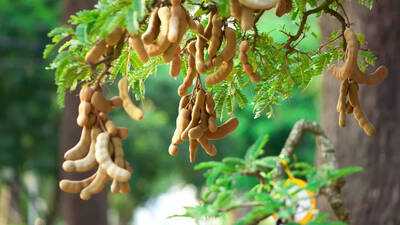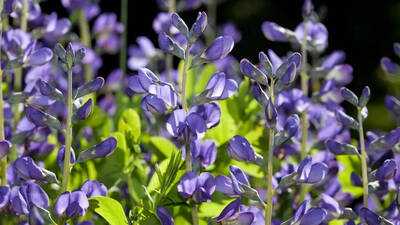Looking for a way to bring peace, greenery, and creativity into your space, without needing a full garden? A bonsai garden might be the perfect answer. Compact, meditative, and endlessly charming, bonsai lets you grow tiny trees in pots and trays, shaping them to look like full-grown forest giants. But here’s the twist: you don’t need exotic imports or pricey tools to get started. India is home to several native tree species that are perfect for bonsai cultivation. With a few basics, a bit of patience, and some thoughtful trimming, you can grow a miniature bonsai forest right at home. This simple guide walks you through everything, from choosing the right Indian trees to soil, layout, pruning, and long-term care.
Why bonsai gardens are so popular now

Bonsai is more than a hobby. It's an ancient art form that teaches patience, observation, and care. As urban homes get smaller and stress levels rise, the idea of growing a personal green sanctuary, even in a small tray, has found new life. Some benefits of a home bonsai garden include:
Best native Indian trees for bonsai gardening
Want a low-maintenance, climate-friendly bonsai? Stick to native Indian trees. They’re already adapted to local conditions and often respond well to root pruning and shaping. Here are some ideal choices:
Ficus religiosa ( Peepal tree)

One of the most revered trees in Indian tradition, the Peepal is not just spiritually significant, it’s also a dream to grow as a bonsai. It grows quickly, adapts beautifully to shaping and root pruning, and develops a strong, gnarled trunk over time. Its heart-shaped leaves flutter with the slightest breeze, adding a calming visual element to your bonsai forest. Plus, it’s tough enough to handle most indoor conditions with proper sunlight.
Ficus benghalensis ( Banyan tree )

India’s national tree, the mighty Banyan, becomes truly magical when miniaturised. Known for its aerial roots, expansive canopy, and resilience, this species brings drama and authenticity to your setup. It thrives under regular pruning and root trimming, and when trained properly, the aerial roots can cascade down from branches, adding a wild, ancient forest aesthetic even in a small pot.
Tamarindus indica ( Imli )

Yes, the humble imli tree can be a showstopper in bonsai form. Its compound leaves, rugged bark, and naturally compact growth make it a favourite among Indian bonsai enthusiasts. Tamarind bonsais are hardy, pest-resistant, and tolerate pruning well. Plus, their distinct leaf structure adds a textural contrast to your miniature forest.
Wrightia tinctoria (Indigo plant)

This lesser-known species is a hidden gem for bonsai lovers. Known for its fine, delicate foliage and white, jasmine-like flowers, Wrightia responds beautifully to pruning and wiring. It grows upright, making it easy to style in traditional upright or informal bonsai shapes. Bonus: it's fast-growing and forgiving for beginners.
Ziziphus mauritiana ( Ber )

Want that rugged, rustic look? The Ber tree delivers. With its thick trunk, thorny branches, and ability to withstand dry conditions, it’s ideal for outdoor bonsai gardens. When miniaturised, it creates a dramatic, semi-wild appearance that resembles trees surviving in arid landscapes. Perfect for desert-themed bonsai scapes.
Murraya koenigii (Curry leaf plant)

This aromatic plant isn’t just for your kitchen, it’s also a surprisingly charming bonsai. With regular pruning, Murraya develops into a graceful, compact tree with slender branches and feathery leaves. It thrives in warm climates, is easy to care for, and adds a unique sensory dimension to your bonsai collection with its fragrant foliage.
Pro tip: Stick to 3–7 saplings of the same species when creating a forest-style bonsai garden for easier care and a cohesive look.
How to set up your bonsai garden at home

Choose a Shallow Tray or Wide PotPick a flat container with drainage holes. Ceramic or stone trays work best, but plastic is fine for starters.
Prepare a Bonsai-Friendly Soil MixAvoid regular garden soil. Mix your own using:
This helps with drainage, aeration, and nutrient flow.
Arrange and Plant Your TreesDesign your layout first, taller trees at the back, shorter in front. This creates depth, just like a real forest. Add moss, stones, or even miniature figures for extra charm. Gently loosen the roots before planting. Trim long roots and place saplings firmly in the soil.
Water and Light NeedsKeep the soil moist, not soggy. Most Indian bonsai trees need:
Prune and Shape Regularly
Use bonsai scissors or any sharp, clean tool. Trim overgrown branches to maintain structure. You can also use bonsai wire to bend and guide branches over time.
Ongoing bonsai care tips
Common Mistakes to Avoid in Bonsai Gardening
Growing a bonsai garden at home isn’t just about looks, it’s about slowing down, connecting with nature, and creating something truly your own. Using native Indian trees makes the process more sustainable, rewarding, and deeply rooted in local tradition. So grab a tray, pick your saplings, and start shaping your tiny forest. With time and love, it might just become your favourite corner of peace.
Also read| Tips to grow lilies that steal the spotlight
Why bonsai gardens are so popular now

Bonsai is more than a hobby. It's an ancient art form that teaches patience, observation, and care. As urban homes get smaller and stress levels rise, the idea of growing a personal green sanctuary, even in a small tray, has found new life. Some benefits of a home bonsai garden include:
- Stress relief through mindful trimming and watering
- Better air quality with live plants indoors
- Creative expression through tree shaping and landscape design
- Space-saving greenery, ideal for apartments and balconies
Best native Indian trees for bonsai gardening
Want a low-maintenance, climate-friendly bonsai? Stick to native Indian trees. They’re already adapted to local conditions and often respond well to root pruning and shaping. Here are some ideal choices:
Ficus religiosa ( Peepal tree)
One of the most revered trees in Indian tradition, the Peepal is not just spiritually significant, it’s also a dream to grow as a bonsai. It grows quickly, adapts beautifully to shaping and root pruning, and develops a strong, gnarled trunk over time. Its heart-shaped leaves flutter with the slightest breeze, adding a calming visual element to your bonsai forest. Plus, it’s tough enough to handle most indoor conditions with proper sunlight.
Ficus benghalensis ( Banyan tree )

India’s national tree, the mighty Banyan, becomes truly magical when miniaturised. Known for its aerial roots, expansive canopy, and resilience, this species brings drama and authenticity to your setup. It thrives under regular pruning and root trimming, and when trained properly, the aerial roots can cascade down from branches, adding a wild, ancient forest aesthetic even in a small pot.
Tamarindus indica ( Imli )
Yes, the humble imli tree can be a showstopper in bonsai form. Its compound leaves, rugged bark, and naturally compact growth make it a favourite among Indian bonsai enthusiasts. Tamarind bonsais are hardy, pest-resistant, and tolerate pruning well. Plus, their distinct leaf structure adds a textural contrast to your miniature forest.
Wrightia tinctoria (Indigo plant)
This lesser-known species is a hidden gem for bonsai lovers. Known for its fine, delicate foliage and white, jasmine-like flowers, Wrightia responds beautifully to pruning and wiring. It grows upright, making it easy to style in traditional upright or informal bonsai shapes. Bonus: it's fast-growing and forgiving for beginners.
Ziziphus mauritiana ( Ber )
Want that rugged, rustic look? The Ber tree delivers. With its thick trunk, thorny branches, and ability to withstand dry conditions, it’s ideal for outdoor bonsai gardens. When miniaturised, it creates a dramatic, semi-wild appearance that resembles trees surviving in arid landscapes. Perfect for desert-themed bonsai scapes.
Murraya koenigii (Curry leaf plant)

This aromatic plant isn’t just for your kitchen, it’s also a surprisingly charming bonsai. With regular pruning, Murraya develops into a graceful, compact tree with slender branches and feathery leaves. It thrives in warm climates, is easy to care for, and adds a unique sensory dimension to your bonsai collection with its fragrant foliage.
Pro tip: Stick to 3–7 saplings of the same species when creating a forest-style bonsai garden for easier care and a cohesive look.
How to set up your bonsai garden at home

Choose a Shallow Tray or Wide PotPick a flat container with drainage holes. Ceramic or stone trays work best, but plastic is fine for starters.
Prepare a Bonsai-Friendly Soil MixAvoid regular garden soil. Mix your own using:
- 40% akadama or baked clay granules
- 30% coarse sand or crushed lava rock
- 30% compost or cocopeat for nutrition
This helps with drainage, aeration, and nutrient flow.
Arrange and Plant Your TreesDesign your layout first, taller trees at the back, shorter in front. This creates depth, just like a real forest. Add moss, stones, or even miniature figures for extra charm. Gently loosen the roots before planting. Trim long roots and place saplings firmly in the soil.
Water and Light NeedsKeep the soil moist, not soggy. Most Indian bonsai trees need:
- 4–6 hours of indirect sunlight
- Misting in dry conditions to boost humidity
- Avoid placing them in direct afternoon sun, especially during summer.
Prune and Shape Regularly
Use bonsai scissors or any sharp, clean tool. Trim overgrown branches to maintain structure. You can also use bonsai wire to bend and guide branches over time.
Ongoing bonsai care tips
- Fertilize once a month using diluted liquid compost or bonsai-specific feed
- Repot every 1–2 years to trim roots and refresh the soil
- Use neem spray to prevent pests like mites or scale insects
- Rotate your tray weekly so all sides of your trees get equal sunlight
- Don’t skip pruning—it’s key to keeping your mini forest healthy and well-shaped
Common Mistakes to Avoid in Bonsai Gardening
Growing a bonsai garden at home isn’t just about looks, it’s about slowing down, connecting with nature, and creating something truly your own. Using native Indian trees makes the process more sustainable, rewarding, and deeply rooted in local tradition. So grab a tray, pick your saplings, and start shaping your tiny forest. With time and love, it might just become your favourite corner of peace.
Also read| Tips to grow lilies that steal the spotlight
You may also like

'Not normal': Couple abandons 10-year-old son in Barcelona airport; was getting late to catch flight

Bharat Cybersecurity Exercise 2025 Concludes Strong

126 packages, six countries: Israel airdrops aid in Gaza; dismisses 'starving' Palestinians claims

SSC CGL Vacancy 2025: SSC has released the potential vacancy list of CGL..

ENG vs IND 2025: 'Without Bumrah, Siraj raises his game' - Aakash Chopra





